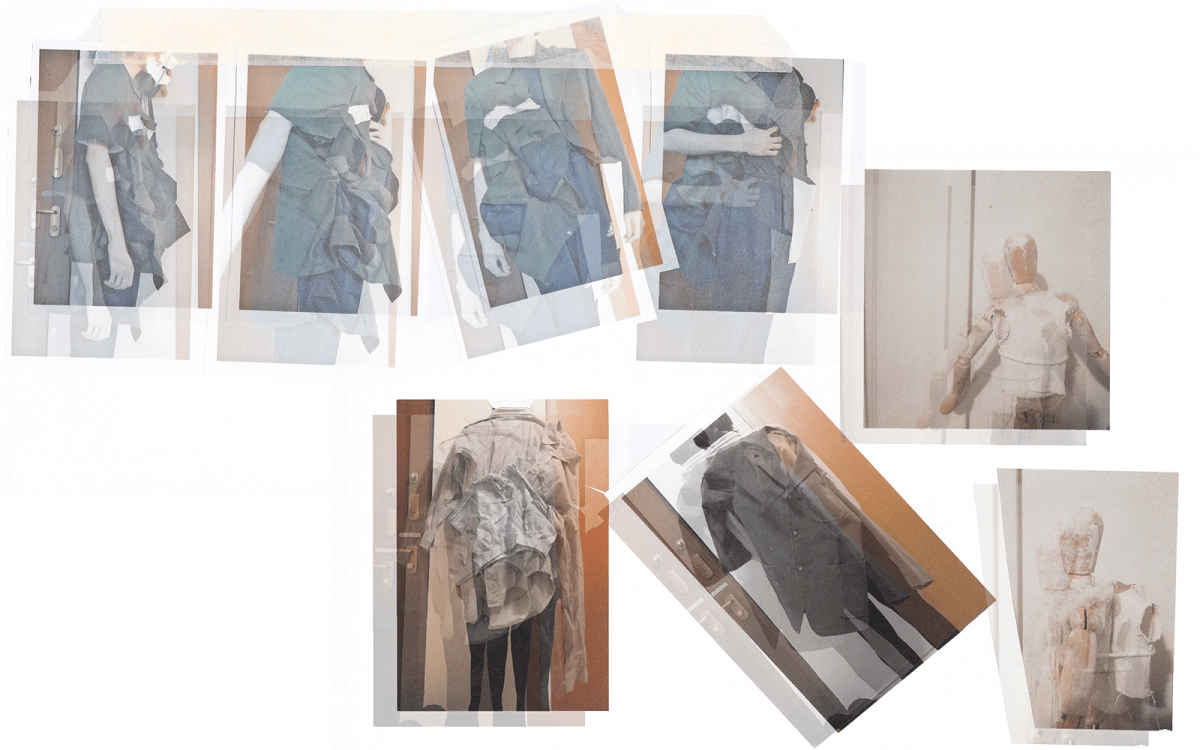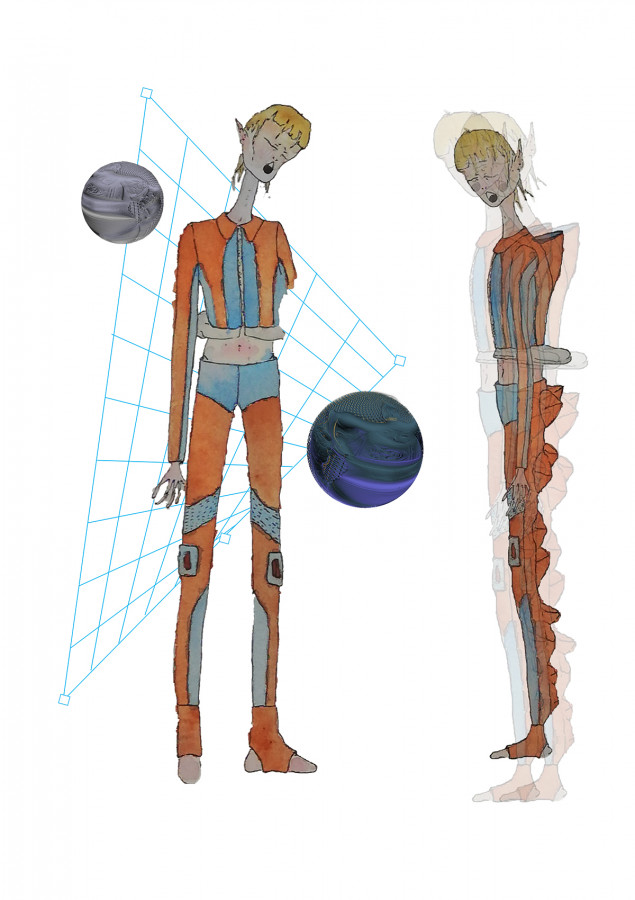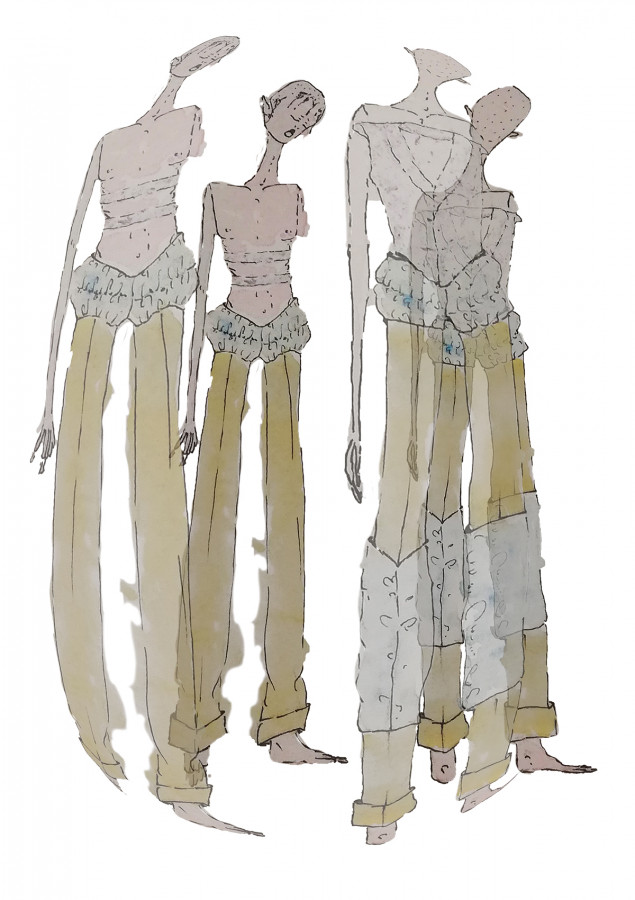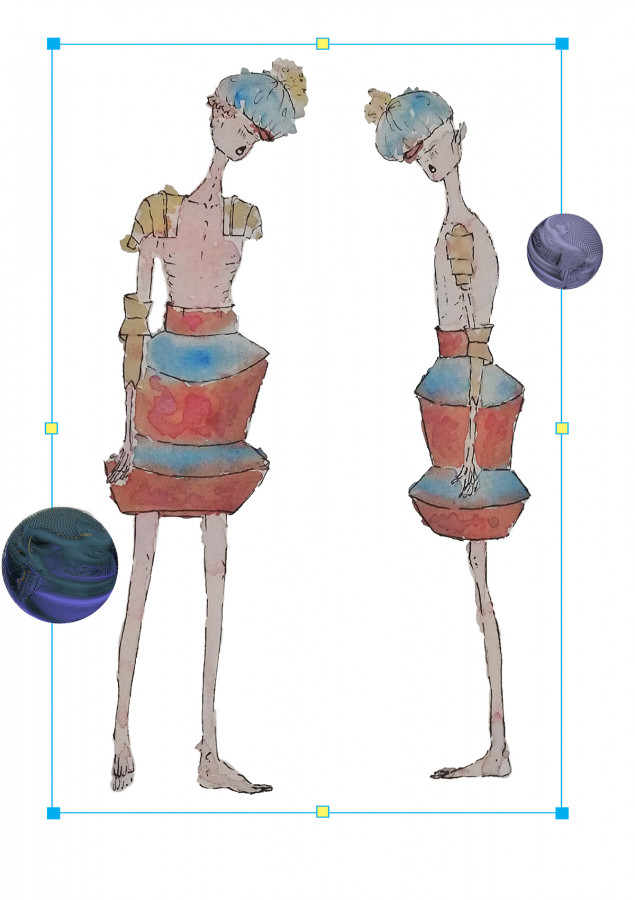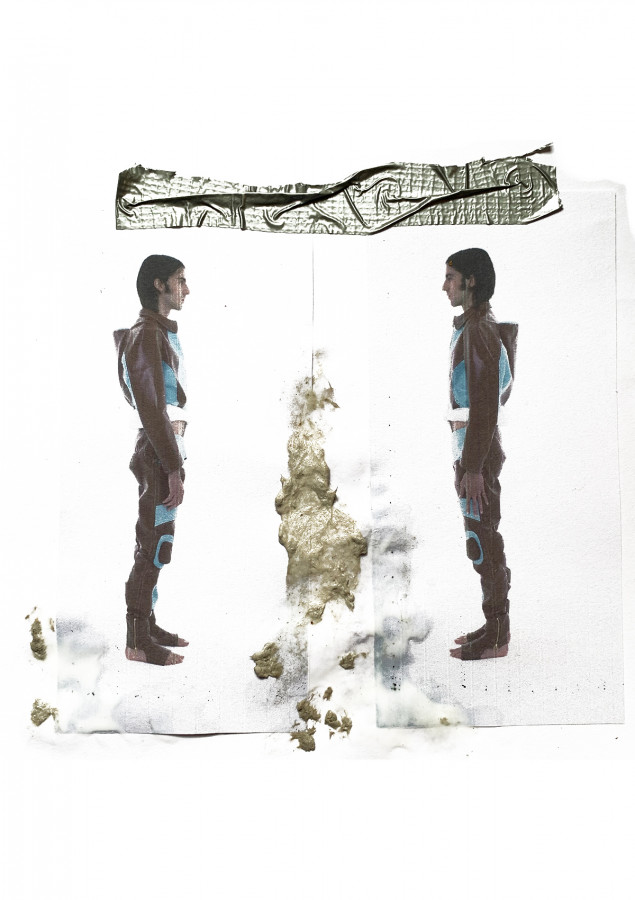VERIFICA IMMOBILE DELLO SPAZIO IN MOVIMENTO IN UN REGNO DI MEZZO DIMENSIONALE
The starting point for the collection was "Dinamismo Plastico" by Umberto Boccioni, then his sculptural works, in which the body in motion incorporated the surrounding space. Taking into consideration our historical period, the history of this collection has as its protagist the contemporary man; in continuous movement it absorbs the space around him, constituted by his objects or as an inner existential condition, where space represents any other and undefined. Contemporary man, dependent on connection, ends up in a cyberspace, a timeless dimension and without space, but in which he can find his original and primitive state of nature. This cycle, eternal and equal to itself, has no beginning and end and every moment is lived in fullness. To believe in the eternal return means to believe that the sense of being is not outside of being but in being itself.


Marco Santini
I'm 22 years old and I was born in Pistoia (Tuscany). I went to Art school and then I decided to move to Milan to study Fashion Design in NABA. I see fashion as a powerful means of communication and an artistic means in wich you can exprime yourself . In my vision, fashion unites all the artistic means we have available.
marco_santini@studenti.naba.it
https://www.instagram.com/marco.santini
The starting point for the collection was “Dinamismo Plastico” by Umberto Boccioni, then his sculptural works, in which the body in motion incorporates the surrounding space. Precisely the body in motion, or rather the body represented by its speed, constitutes the central core of the conceptualization of Futurist art in general, and not only that of Boccioni. The definition of velocity itself, as well as its perception, had undergone profound changes since the last quarter of the 9th century. Before then it was simply one of the three kinetic quantities of classical physics, along with displacement and acceleration. According to this conception, rooted in the principle of Galilean relativity, time is the invariant magnitude of all physical systems, whatever the reference adopted. At the end of the 19th century, with the discovery of the invariance of the speed of light in the void, this idea is seriously questioned. In fact, in those years it turns out that light travels at an enormous and constant speed that does not depend on the particular reference system within which it is measured. This revision of the classic concept of speed led to a profound reconsideration of the physical world not only by experts such as Albert Einstein and Max Plank, founders respectively of the theory of relativity and quantum theory, but it had a vast repercussion on the cultural world as a whole, including the artistic and literary avant-garde. The revolution of the concept of speed led almost naturally to the revolution of the concept of time and space, the elements by which speed is defined. What most impressed the cultural sectors most felt of the time is that space and time could no longer be considered as autonomous and absolute containers of the objects that moved in them; rather they were those objects, with their mass and their speed (that is, we would say, with their momentum) to determine, or rather to perturb space. So space and time lost their millennial autonomy and absoluteness betrayed by the invariance of the speed of light. The bodies in speed then become the legislators of space, and it is no wonder that the futurists, especially with the Manifesto of Marinetti of 1909 made it the great protagonist of their works. On the other hand it was also the perception of the speed that had changed, thanks to the technological developments of the second industrial revolution:The train, the car, the plane, the wireless telegraph communications, the moving images of the cinemtograph were all technological innovations that struck the immediacy of the masses. And precisely in the name of this the Futurists praised the speed against the passing of antiques history, the moldy slowness, the time marked according to the rhythms of past culture. Boccioni’s works see in the speed of the bodies the very symbol of the vital action opposed to the death of fixed and fixed images of classical art.


Clarissa Cini
My name is Clarissa Cini, I’m from Prato. I graduated in 2018 from the Liceo Artistico P. Petrocchi in Pistoia, where I took the Fashion Design course for five years. I moved to Milan to embark on an artistic journey in the fashion sector expanding my interests also towards humanistic-cultural subjects. I chose the address of Fashion Styling and Communication to experiment with new forms of expression such as publishing, and those related to the communication part from which I would like to be able to acquire the right skills to be able to interpret the world of art and fashion. The idea for this project starts from the theory of relativity by Albert Einstein reinterpreting it in an artistic and abstract way; starting from the plastic dynamism of Umberto Boccioni, in which the body in motion moves in the surrounding space, and disintegrating expands to encompass the entire universe.
clarissa_cini@studenti.naba.it
https://www.instagram.com/clariscini





